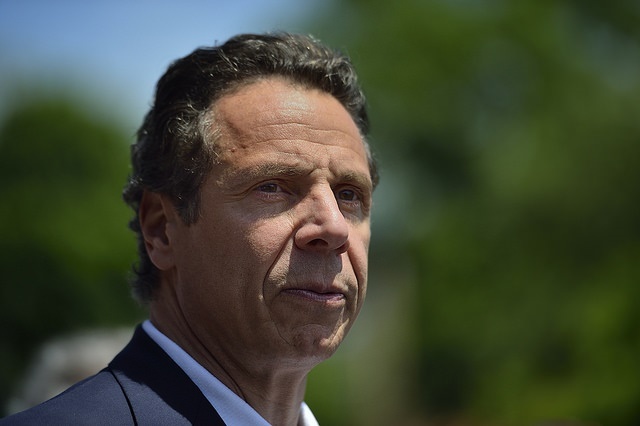New York Governor Andrew Cuomo is responding to a report on his state’s failing public education system by seeking implementation of several new measures. “The State of New York’s Failing Schools: 2015 Report” gave failing grades to 91 schools in New York City, where 50,000 students attend schools with a 50 percent or lower high-school graduation rate.
“Our education system needs dramatic reform, and it has for years,” Cuomo said in his annual State of the State address. “I believe this is the year to do it.”
Among the fixes proposed by the governor are adopting new standards for teachers in light of evidence only two-thirds of new teachers were as adept at reading as a high-school senior, adding 100 charter schools, and granting more authority to state government to turn around failing schools. Cuomo is also recommending using state funds to cover tuition for high-achieving college students who agree to teach at least five years at a New York school, rewarding high-performing teachers with a $20,000 bonus, and allowing tax credits for personal donations to private and public schools.
“Gov. Cuomo’s education agenda fights a monopoly the only way you can: with competition,” said Derrell Bradford, executive director, of NYCAN: The New York Campaign for Achievement Now, the Empire State’s branch of 50CAN: The 50 State Campaign for Achievement Now, a national network of state-based education-reform advocacy groups. “The plan would increase the number of charter schools by 100 and eliminate a secondary cap, based on region, in the law. It also includes an Education Investment Tax Credit, which would incentivize donations by business and individuals to scholarship-granting organizations like similar programs in Florida and Pennsylvania.”
‘Pushing the Envelope’
Charles Sahm, education director at the Manhattan Institute, a New York City-based think tank promoting economic choice and personal responsibility, says he applauds Cuomo’s education agenda.
“He’s really pushing the envelope with teaching evaluations,” Sahm said. “I like the idea of raising the bar to qualify teachers as well. I think it’s great and courageous in a lot of ways.”
Bradford said, “It’s unprecedented and welcome for a Democrat in a highly unionized state to take on these issues, and the kids of New York can’t wait one more second for them to become law.”
According to the report, there are 698 school districts in New York, with 4,530 public and charter schools responsible for educating 2.7 million students. The state also has 1,768 private schools. Average spending per student increased from $11,546 in 2002-03 to $19,552 in 2012-13, resulting in New York spending more per pupil than any other state since 2005-06. Currently, the state spends 84 percent more than the current national average of $10,608.
Quarter-Million in Failing Schools
The report also identifies 178 schools statewide as receiving failing grades, with many showing no improvement over the past decade. The study estimates almost a quarter-million students are attending failing schools.
The report states, “It is incongruous that 99 percent of teachers were rated effective, while only 35.8 percent of our students are proficient in math and 31.4 percent in English language arts. How can so many of our teachers be succeeding when so many of our students are struggling?”
“The results are stunning but not surprising, and they tell us what we already know,” Bradford said. “New York is one of the highest-spending states for public education in America, spending almost twice the national average to get the kind of soul-crushing results you see in the governor’s failing-school study. And even while people like Karen Magee, president of New York State United Teachers, tell us there is no crisis and that poverty trumps all, they have their hand out for another $2 billion in school aid. They want the money, but not the responsibility, and our kids deserve better.”
‘Breach of Social Contract’
Proficiency tests for New York students in grade 3 through grade 8 showed dismal results. Citing the proficiency statistics in math and English language arts, the report stated, “Thus approximately two-thirds of students are NOT proficient in these two subjects. Nationally, New York is ranked 32nd in both 4th and 8th math scores, and 20th and 32nd in 4th and 8th grade ELA scores, respectively.” Cuomo called the poor results “a fundamental breach of the social contract.”
Sahm said he’s pleased Cuomo is raising the cap on charter schools while seeking to make charters more accountable.
“Many charter schools are positively transforming the education landscape of New York City,” Sahm said, but he noted several charters are severely underperforming and should have their charters revoked. He cites the United Federation of Teachers Charter School as an example of school closure due to consistently poor student performance.
Bradford says the report effectively indicates the shortcomings of the state’s education system.
“Monopolies drive up cost and decrease quality,” Bradford said. “And if you are a low-income or minority kid in New York City you have a high chance of being zoned to a school that does not work for you, where you are more likely to get an ineffective teacher, and very likely to have the teachers union leadership look the other way on your education.”
Bruce Edward Walker ([email protected]) is an information technology and telecommunications policy advisor for The Heartland Institute.
Image by Diana Robinson.
Learn More:
“The State of New York’s Failing Schools: 2015 Report,” Office of Gov. Andrew Cuomo, Policy Office, Education Team and the Division of Budget: https://heartland.org/policy-documents/state-new-yorks-failing-schools-2015-report





